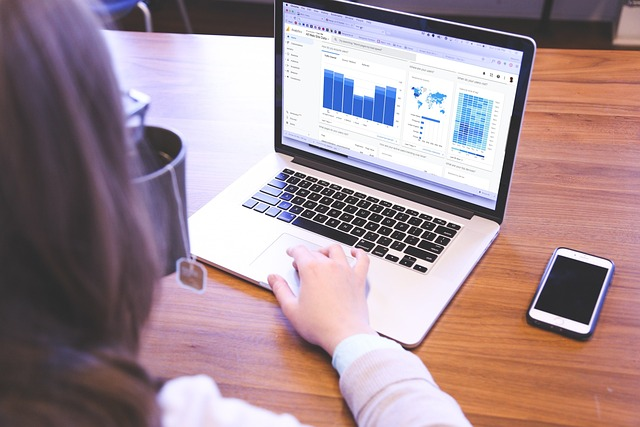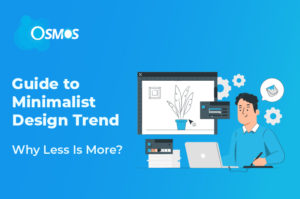Learn the most effective metrics to measure your digital marketing success, from website traffic to customer lifetime value. Discover how you can improve your overall performance and achieve better ROI.
Measuring digital marketing success is essential for businesses of all sizes. It helps businesses to evaluate their efforts, gain insights and adjust campaigns accordingly.
Without measuring the success of campaigns, it would be hard to know how well initiatives are performing and whether they’re providing a return on investment (ROI).
Digital marketing can often be an expensive endeavor, and having measurable metrics is important in order to determine if investments are paying off. Measuring the success of digital marketing also helps businesses to understand their audience better by looking at how they interact with content and campaigns.
Additionally, understanding the effectiveness of campaigns can enable businesses to improve their overall digital marketing strategy and maximize ROI. By having insight into what works and what doesn’t, businesses can identify areas for improvement to achieve greater success with digital marketing initiatives.
Key Benefits of Measuring Digital Marketing Metrics
Measuring digital marketing metrics can be an invaluable asset to any business looking to succeed and stay ahead of the competition in today’s market. Here are some signs for entrepreneurs to measure digital marketing metrics:

Set a Realistic Budget
Measuring digital marketing metrics helps businesses create a realistic and achievable budget. By tracking data such as website visits, clicks, impressions, leads, and conversions, companies gain insight into the effectiveness of their campaigns.
This allows them to adjust their budget accordingly by allocating more funds towards strategies that work well and cutting back on areas where they do not see the expected return on investment.
Improved Conversion Rate
Measuring digital marketing metrics and understanding what they mean can help you understand the effectiveness of your strategies, optimize campaigns for higher conversion rates, and improve the return on investment (ROI) of your digital marketing efforts. By tracking these metrics, you can quickly identify which areas are performing well and where improvements need to be made in order to boost conversions.
Make Effective Campaign Decisions
Measuring digital marketing metrics is essential for effective campaign decisions. Digital marketing metrics are the indicators used to measure the success of a campaign, whether it’s an email blast, a paid search ad, or a social media post. Regularly monitoring these metrics lets you see how well your campaigns perform and make adjustments if needed.
10 Important Digital Marketing Metrics To Keep An Eye On
Digital marketing metrics are key to measuring the success of your digital marketing campaign. If you don’t track and measure these metrics, you won’t be able to accurately assess the effectiveness of your efforts and optimize for better results. Here are 10 important digital marketing metrics that you should keep an eye on:
1. Channel Traffic
Measuring channel traffic is a crucial digital marketing metric. It provides insights into how customers interact with your brand, enabling you to monitor and adjust your strategies accordingly.
Channel traffic can offer valuable data such as customer engagement levels on different platforms, which pages are performing well or not, where visitors originate from, what campaigns bring in the most conversions, and so on.
By analysing channel traffic, companies can better understand their target audience and optimize their digital marketing efforts for maximum effectiveness. Additionally, by measuring channel traffic, businesses can identify areas where they are underperforming and take action to drive more sales and leads.
2. Website Visits
Measuring website visits is one of the most important metrics to consider when assessing the success of digital marketing campaigns. This provides valuable insight into your strategies’ performance and whether they’re driving meaningful traffic to your website.
Understanding site visits can help you better understand user engagement, track ROI from different campaigns, and maximize visitor conversions. Monitoring website visits is a great way to gain insight into your target audience and learn more about what motivates them.
By tracking page views, you can determine which content best attracts visitors and how they interact with your site. This data can be used to optimize the user experience on your pages and improve visitor retention.
3. New Visitors Vs. Return Visitors
Measuring New Visitors Vs. Return Visitors is an important KPI for digital marketers. It provides important insights into the effectiveness of their marketing campaigns and strategies and the overall performance of their website or app.
New visitors represent potential customers who have not interacted with your brand before, so measuring how many new visitors are coming to your site is essential. This metric can be used to track the success of marketing strategies for acquiring new customers and assess the effectiveness of any advertising campaigns targeting new audiences.
Return visitors, on the other hand, provide valuable insight into how loyal existing customers are to your brand. It’s also important to measure this since it can provide valuable insight into customer engagement and retention.
Overall, measuring New Visitors Vs. Return Visitors is an important KPI for digital marketers as it provides valuable insights into the effectiveness of their strategies and campaigns. By monitoring these metrics, marketers can optimize their digital marketing efforts more effectively for maximum success.
4. Bounce Rate
Bounce Rate is an important Key Performance Indicator (KPI) for digital marketing, as it provides insight into the efficiency of a website or advertisement in attracting and keeping visitors. By tracking Bounce Rates, marketers can identify areas that need improvement and make changes to improve user experience.
High bounce rates often indicate that visitors were unimpressed with the content or that the page took too long to load. Low bounce rates, on the other hand, suggest that visitors were engaged with the content and stayed for a longer period of time.
Measuring Bounce Rate is a great way to measure user engagement. It can be combined with other metrics like conversion and click-through rates to gain deeper insights into how a website, advertisement, or campaign performs.
5. Click-Through Rate
Click-Through Rate (CTR) is an important digital marketing metric that can be used to measure a campaign’s or advertisement’s success. Monitoring CTR helps organizations understand how effectively their marketing message and related content engage users.
As campaigns grow more complex, measuring CTR is increasingly becoming one of the main KPIs (Key Performance Indicators) for measuring success. CTR is also used to gauge the effectiveness of A/B testing, allowing organizations to identify which version of the campaign or advertisement performs best with their target audience.
It’s important to remember that click-through rates can vary widely depending on factors like audience size, content quality, ad placement, etc. Therefore, it’s best to measure CTR compared to other metrics such as conversion rate, cost per click, and other campaign performance indicators.
6. CPV And RPV
CPV (Cost-Per-Visitor) and RPV (Return-Per-Visitor) are two important metrics for digital marketers to measure, as they provide valuable insights into the performance of their campaigns.
CPV measures how much it costs to attract a visitor to a website or application, while RPV measures the return on investment that that same visitor generates. Together, these two metrics provide a comprehensive view of the effectiveness of a digital marketing campaign.

By tracking CPV and RPV, marketers can identify areas where their campaigns are performing well and areas that need improvement. Additionally, they can use this data to inform future campaigns and optimize spend in order to maximize their ROI. With CPV and RPV, digital marketers can ensure that their campaigns are delivering the desired results.
7. Mobile Traffic
Measuring mobile traffic is a key digital marketing metric because it allows marketers to monitor the performance of their campaigns. It helps determine how well campaigns are reaching customers and if they’re achieving the desired results.
By measuring mobile traffic, marketers can gain a better understanding of who is engaging with their content and adjust their strategies accordingly. With this data, marketers can make informed decisions about how to optimize campaigns for a better outcome.
Mobile traffic is also important because it allows businesses to understand the preferences of their target audience and tailor content accordingly. Knowing which devices customers are using, and what device they’re more likely to convert on, helps marketers create effective campaigns that will produce the desired results.
8. Inbound Links To Website
Inbound links to a website are an important digital marketing metric, as they directly impact search engine performance and website visibility. Inbound links often refer to hyperlinks from other websites that lead visitors to the target website. These links help improve a site’s ranking in search engine results pages (SERPs).
Having more inbound links from reputable websites will often result in better search engine performance, which can lead to more website traffic and higher conversions. Inbound links are also used by search engines as a signal of website trustworthiness, making them an important metric for SEO.
It is thus essential for digital marketing professionals to measure and monitor the number of inbound links their website has. This helps them assess and improve their digital marketing campaigns, leading to better performance.
9. Engagement Rate
Engagement Rate is an important KPI for digital marketing, as it helps measure the impact of campaigns and how well they are being received by users. It provides a clear indication of user interest and engagement with content, allowing marketers to adjust their activities accordingly.
By measuring Engagement Rate, companies can better understand user behavior and preferences, which gives them the ability to tailor their campaigns in order to maximize reach and visibility. Furthermore, Engagement Rate is a key indicator of customer loyalty and retention, as it helps identify which users are likely to be more engaged with a brand over time.
Thus, measuring Engagement Rate is essential for digital marketing success and should not be overlooked. Additionally, accurate measurement of Engagement Rate allows marketers to track the performance of their campaigns over time and make informed decisions about future activities.
10. Cost Per Conversion
It is an important KPI that can be used to measure the success of digital marketing campaigns. This metric measures how much it costs to acquire a new customer and provides insights into the effectiveness of a company’s advertising efforts.
By tracking this metric, businesses can identify areas where their spending is yielding positive results, as well as identify opportunities for improvement. By understanding this data in relation to other key metrics, businesses can better understand the return on their marketing investments and make informed decisions about allocating resources to maximize profit.
Tracking cost per conversion is an important part of any digital marketing strategy. It helps businesses understand the effectiveness of their campaigns and where improvements need to be made in order to maximize their return on investment. By understanding this data, businesses can make informed decisions about how to allocate resources to maximize profits.







